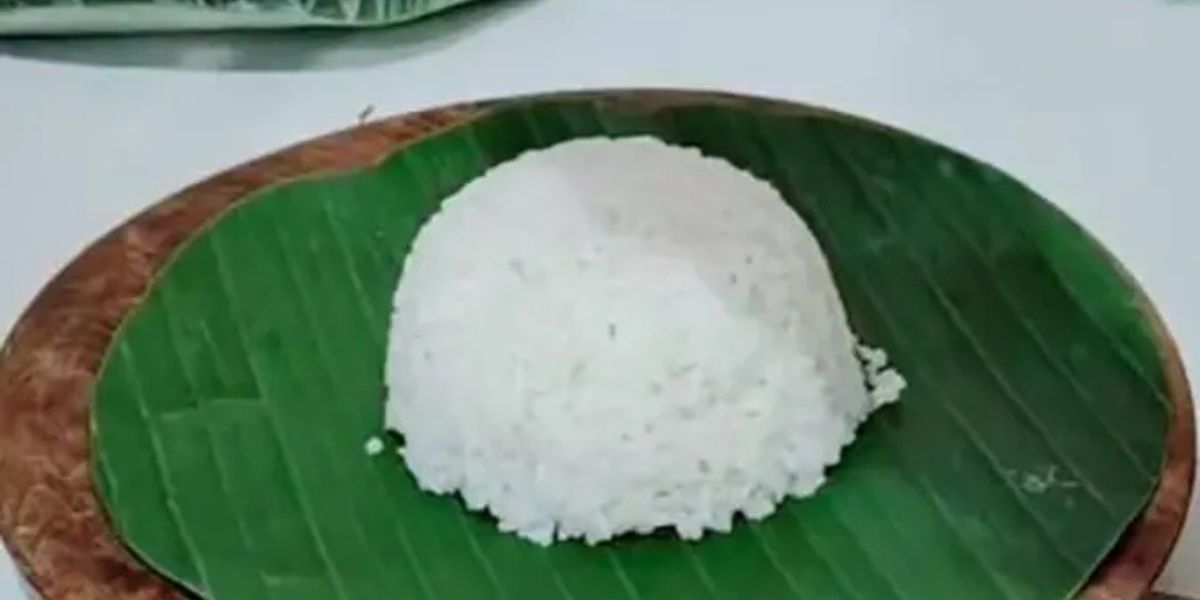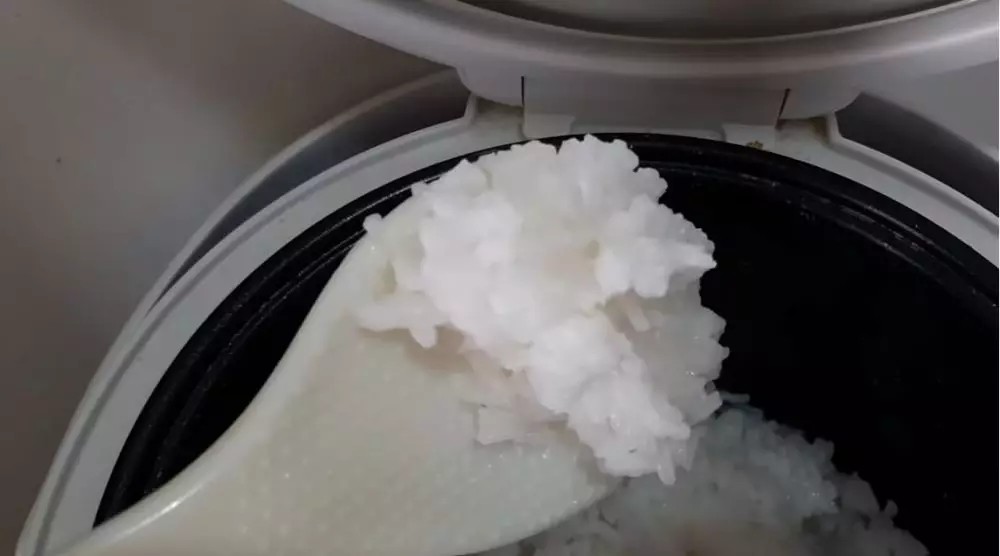How to Cook Rice That Lasts Long and Lowers Bad Cholesterol
Discover the secrets to cooking delicious and long-lasting rice, while also helping to lower cholesterol, through simple tips that will change the way you cook!

Kapanlagi.com - White rice, a staple food that is irreplaceable for many people, especially in our homeland, Indonesia. However, behind the enjoyment of every bite, there are interesting facts that we should know! According to data from Healthline, one cup of white rice contains about 45 grams of carbohydrates equivalent to 206 calories.
The starch in rice is divided into two types: easily digestible starch, which quickly converts to sugar in the blood, and resistant starch, which is high in fiber and beneficial for our digestion. Unfortunately, most of the starch in white rice is of the easily digestible type, which can increase our blood sugar levels.
But don't worry! With the right cooking techniques, we can still enjoy rice without worrying about spikes in blood sugar levels. Summarized by Kapanlagi on Friday (28/03/2025) from various sources. This article will discuss several ways to cook healthier and lower sugar rice.
White rice, a staple food that is irreplaceable for many Indonesians, holds a secret behind its deliciousness. With one cup of white rice containing about 45 grams of carbohydrates and producing 206 calories, this rice is indeed tempting to the palate. However, behind its deliciousness, there are two types of starch: easily digestible starch that quickly converts to sugar in the blood, and resistant starch that is high in fiber and good for digestion. Unfortunately, the majority of the starch in white rice is the easily digestible type, which can raise blood sugar levels and be a concern for our health.
The starch contained in rice can actually be an enemy for health, especially for diabetics and those trying to maintain an ideal weight. The spike in blood sugar caused by this starch can increase the risk of developing type 2 diabetes, insulin resistance, and body fat accumulation. Interestingly, research presented at the 249th National Meeting and Exposition of the American Chemical Society revealed that the water from cooking rice contains easily digestible starch, which plays a significant role in triggering those blood sugar spikes.

Illustration of cooking rice (Image by ABC on YouTube)
Many people believe that adding coconut oil can lower the sugar content in rice, but there is a more practical and efficient way: discard the excess water while cooking!
First, wash the rice as usual, then place it in the rice cooker with enough water. Cook until the rice cooker releases steam, then open and lift the pot with a cloth. Discard the excess water from the rice, then add fresh water just enough to soak it. Close the rice cooker again and continue cooking until the rice is done. According to YouTube ABC, this method has been proven effective in reducing the digestible starch content in rice, making it a smart choice for those looking to maintain their health!
Discarding the excess water while cooking rice is not just a practical step, but it also holds a wealth of interesting health benefits! By doing this, we can reduce the sugar content in rice and eliminate calories from digestible starch, helping to keep blood sugar levels stable. Not only that, but this simple action also has the potential to lower the risk of diabetes and obesity, while still maintaining the delicious taste and texture of rice. A smart way to serve healthier rice without sacrificing enjoyment!

Illustration of cooking rice (Image by ABC on YouTube)
Did you know that the way rice is stored can affect blood sugar levels? According to research from sugarfit.com, cooling rice before consumption can actually increase the resistant starch content, which is difficult to digest and does not quickly raise blood sugar levels. To reap the benefits, simply allow the cooked rice to cool for a few hours, or store it in the refrigerator for at least 12 hours before enjoying. Don't worry, you can still reheat it, as the resistant starch remains intact even after the rice is reheated. So, get ready to enjoy healthier rice!
Yes, draining the cooking water can help remove most of the easily digestible starch, which contributes to spikes in blood sugar levels.
True. Chilled rice has a higher content of resistant starch, which is better for blood sugar control.
In addition to draining the cooking water, another method is to cool the rice before consumption or use coconut oil during cooking.
Yes, this method can be applied to various types of rice, including white, red, and brown rice. However, red and brown rice are naturally healthier as they are higher in fiber and have a lower glycemic index.
Yes, as long as the water ratio after draining the cooking water is properly monitored so that the rice is not too mushy or hard.
(kpl/khs)
Cobain For You Page (FYP) Yang kamu suka ada di sini,
lihat isinya
Discover the secrets to cooking delicious and long-lasting rice, while also helping to lower cholesterol, through simple tips that will change the way you cook!
Discover the secret to making the perfect corn fritters: crispy on the outside, delicious on the inside, and won't easily crumble when fried! With this simple recipe, you'll be ready to serve a tempting snack for family and friends.
Discover the secrets to perfecting the boiling of kepok bananas! With the right technique, you can achieve bananas that remain bright, delicious, and appetizing. Ready to create an unforgettable banana dish?
Find an easy and quick solution to remove black residue from your pan using just two simple ingredients found in your kitchen!
Discover clever secrets to keep water in a thermos hot for up to three days without incurring extra costs! With this simple trick, you can enjoy warm drinks anytime, anywhere, without worrying about the water temperature dropping.
Experience the ease of boiling peanuts in a magic cooker with a practical method that guarantees soft and savory peanuts without the hassle! Enjoy the perfect taste of peanuts with just a touch of a button, and make this healthy snack your relaxing companion.
Experience the deliciousness of Betawi vegetable lontong, rich in flavor as a special dish on Lebaran with this practical recipe, ready to delight your taste buds and add warmth to family gatherings!
Achieve your dream of glowing and healthy skin easily with this natural orange peel toner! Discover this refreshing beauty secret and create a stunning glass skin look using only natural ingredients.
Experience the deliciousness of tender and savory sweet beef stew, an iconic dish that is always awaited during Eid. Find the recipe and enjoy the enticing flavors in every bite!
Experience the deliciousness of Padang jackfruit curry, an iconic dish that delights the palate with a fragrant coconut milk broth, perfect to accompany your Eid moments!
Address the issue of fungal nails naturally with garlic! This kitchen ingredient is not only delicious but also has extraordinary properties in tackling nail fungal infections. Try this simple method and feel the benefits!
Experience the magic of natural ingredients to tackle chicken skin texture on your face! With a combination of granulated sugar and tomatoes, you can create an effective and refreshing scrub, making your skin smoother and more radiant. Achieve your dream skin with this simple method!